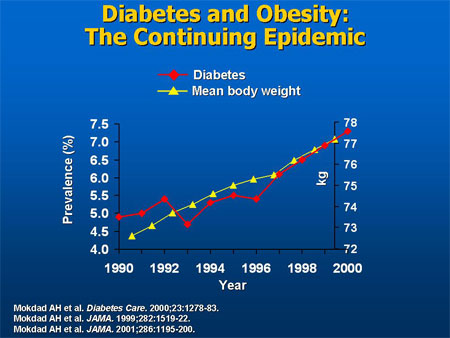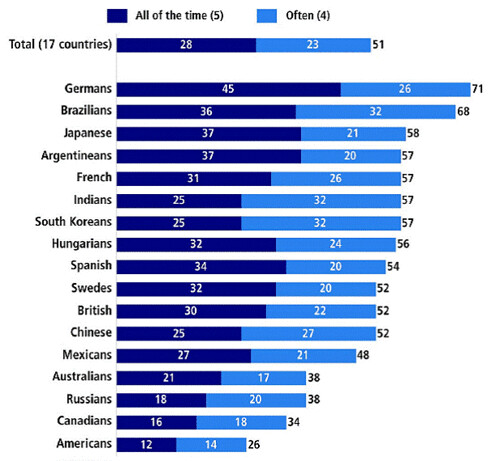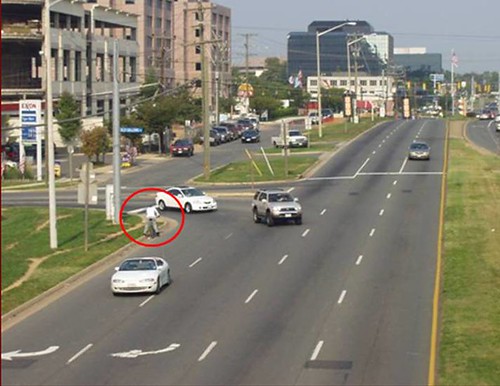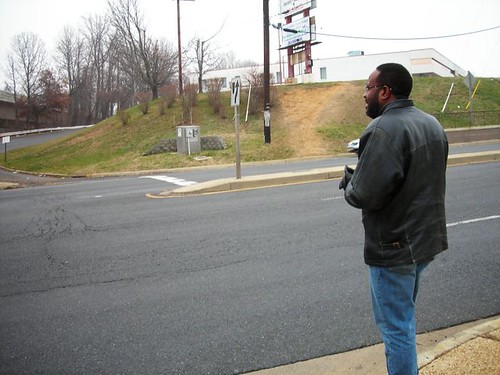5 graphs and 4 photos tell the story on obesity, diabetes & walking

Posted March 28, 2012 at 3:15PM
Perhaps the single most alarming public health trend in the United States today is the dramatic rise in overweight and obesity, bringing serious risks of heart disease, diabetes and other consequences leading to life impairment and premature death. This is bad enough as it is, but I contend that it is particularly unfortunate that we do not sufficiently recognize the extent to which these trends are caused by environmental factors, particularly the shape of our built environment.
The graphs tell the story. Start by looking at the dramatic rise in US obesity over a 14-year period.:
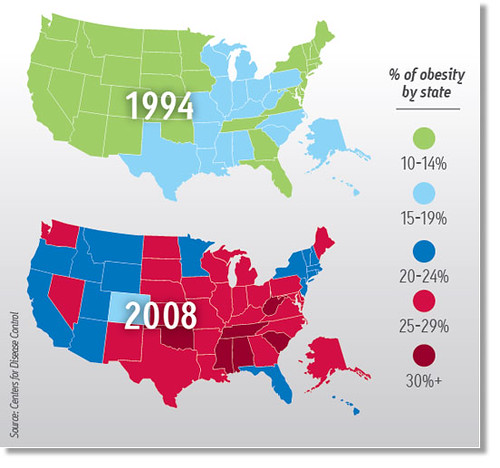
The problem is especially acute in America, where the combined share of overweight and obese residents is now well over 60 percent, ranking first among 22 nations represented in this graph from the OECD:
Now consider the trend in the rate of diabetes:

One of the nation's foremost experts in environmental health, Dr. Richard Jackson, has eloquently reminded us of the seriousness of this problem, which he highlights in a documentary series shown on PBS. Now consider the correlation between obesity and diabetes:
An excellent (though unsigned) article in Medscape Education summarizes why this should be a major concern:
"Type 2 diabetes is a serious problem, not only in our country but also throughout the world. In the United States, probably more than 30% of individuals above the age of 60 years have diabetes (most of which is type 2 diabetes) or impaired fasting glucose. The most recent data support having 21 million people with diabetes in this country with millions not knowing that they have this disease. In general, for every two individuals who have been diagnosed with diabetes, there is another person out there with the disease who is not yet aware of having this condition. More than 2,500 cases of diabetes are diagnosed every single day.
"Diabetes is the leading cause of nontraumatic amputations, eye disease, kidney disease, and a major factor in the development of cardiovascular disease. Cardiovascular disease is the number one cause of death in our patients with diabetes."
(The article continues with a very good exposition of the relationship of diabetes and obesity to ethnicity.) Overall, the risk for death among people with diabetes is about twice that of people without diabetes of similar age.
Now, correlate the problem of the alarming rise in these problems with a serious lack of physical activity in the US. Here is a graph from National Geographic showing what shares of the population in 17 countries walk or bicycle to purposeful destinations:
So: we Americans are first in obesity, and last in everyday exercise. While I won't argue that lack of walking or other everyday exercise is the sole cause of weight-related health problems - we all know the issues with nutrition, for example - the correlation is too strong to discount.
Why don't Americans walk more? Because, as Dr. Howard Frumkin, another of our leading experts on environmental health, puts it in a fantastic presentation, "we have engineered walking and bicycling out of our communities" with community design oriented almost exclusively to driving. (With Andrew Dannenberg, Frumkin and Jackson co-authored the recent Making Healthy Places, published by Island Press.)
We have, in effect, made getting around by foot or bicycle the most dangerous and least attractive option, though some brave souls risk their safety to walk or bicycle despite the hostility of the environment. Want some examples? Here you go:
For more, see the links at the bottom of this post.
There are many remedies available to us, including "complete streets," which fortunately are gaining favor in planning offices around the country. The research also points us in the direction of better street connectivity, neighborhoods with shops in close proximity to homes, and the presence of sidewalks and transit stops. My post yesterday featured a two-minute video on steps cities can take. Let's do it.
Related posts:
- A pedestrian braves the challenges of sprawl (January 10, 2011)
Move your cursor over the images for credit information.
Please also visit NRDC’s Sustainable Communities Video Channel.


